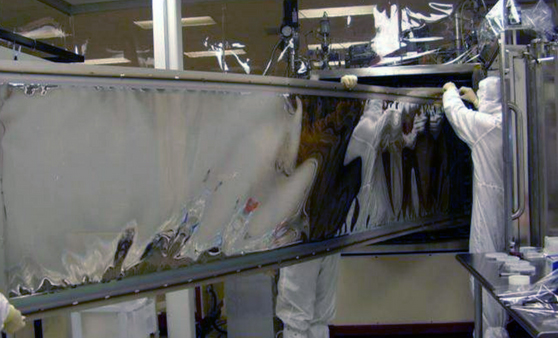Sunshade® Thermal Control Solutions
Deposition Sciences, Inc. (DSI) developed Sunshade® in collaboration with satellite engineers to deliver superior thermal management without RF signal loss. Using all-dielectric thin film coatings, Sunshade® reflects solar heat radiation, maintains RF transmissive performance, and provides ESD protection. Available in free film or peel-and-stick tape formats, Sunshade® is space-qualified, flexible, and trusted across LEO, MEO, and GEO missions. Download the datasheet or contact our team to customize a solution for your mission.

The DSI Difference
DSI Sunshade® was originally developed in collaboration with satellite system engineers looking for improved thermal control using RF-transmissive materials with added electro-static discharge (ESD) properties. Sunshade’s continuous coating is distinct from patterned grid films in that no metallic materials are used in its construction.
DSI Sunshade® comes in sizes up to 2.5 ft x 10 ft. A low emissivity coating on the back surface reduces the thermal load on the satellite and balances the stress of the front surface coating. This makes the product easy to roll and unroll and renders it sufficiently flexible and conformable to enable it to be easily wrapped onto complex-shaped radome assemblies.
Technical Information
Traditional multi-layer insulation (MLI) blankets for satellite and spacecraft consist of a layer of metal coating on a plastic film. Several of these sheets are combined with insulating spacer layers to complete the assembly. This configuration provides highly efficient blocking of solar heat radiation, but the metal coating also absorbs and reflects radio frequencies, thus attenuating the signal and lowering data rates. To address this, a grid pattern is typically laser ablated in the metal film to allow some RF transmission. However, there remains a direct relationship between increased solar heat blocking and reduced data transmission in MLI blankets.
DSI Sunshade coatings are a unique, all-dielectric thin film applied to polyimide sheets. They are used in a single-ply. The all-dielectric construction efficiently reflects solar heat radiation but is also virtually transparent at radio frequencies below 69 GHz.

